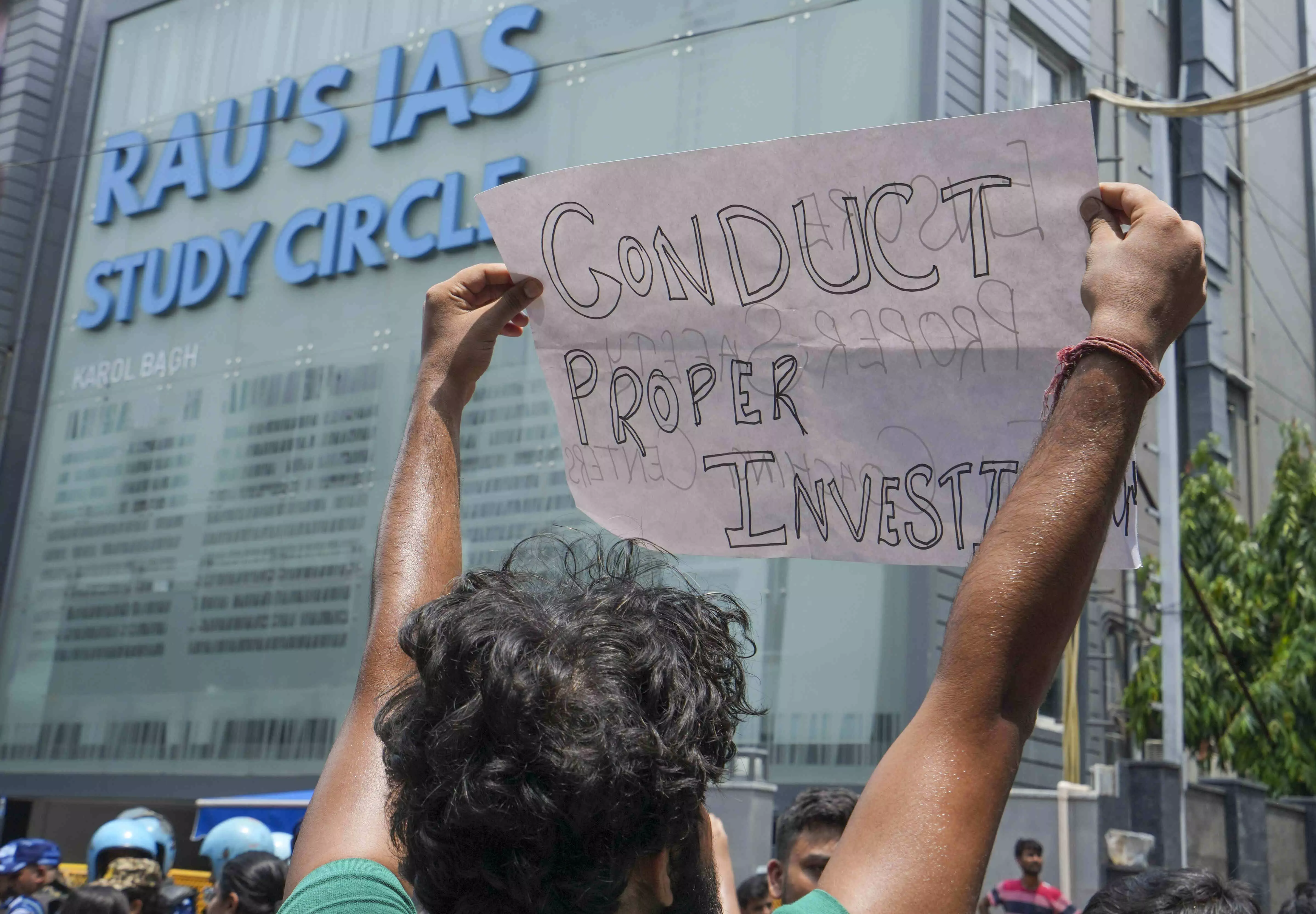Preventable mishap

The basement of a coaching centre in New Delhi’s Rajinder Nagar turned into a death trap for three UPSC aspirants—Taniya Soni, Shreya Yadav, and Naveen Dalvin. In general terms, this appears to be yet another manifestation of infrastructural loopholes in civic-public establishments. Be it the collapses of roofs of Delhi, Rajkot and Jabalpur airports, crumbling of bridges in Bihar, or leakage in the newly-built undersea tunnel in Mumbai—the reckless manner in which unscientific infrastructural push is being revealed complicates the woes of already ill-planned Indian cities. It’s a straightforward irony that as the government gives greater emphasis on budgetary provisions for infrastructure, the deaths occurring from infrastructure failures—both public and private—are becoming more frequent.
In the present case, the Municipal Corporation of Delhi’s categorisation of the incident as ‘disaster’ has to be qualified with the adjective ‘human-made’. There are a whole lot of anthropogenic factors behind the Rajinder Nagar accident. Firstly, the recurring problem of water-logging in New Delhi and many other Indian cities, even after moderately heavy rainfalls, has become a routine phenomenon—with authorities apparently raising their hands in surrender. In the basement of the coaching centre where the tragedy took place, almost thirty students were trapped initially. Needless to say that the potential for casualty was higher. Secondly, the basement of the coaching centre is reported to have inadequate entry-exit points, a configuration which was further compounded by biometric-based entry-exit rules. In case of power outage in such settings, the exit during an emergency situation gets restricted. Thirdly, certain news reports suggest that there might be a glaring inconsistency in drainage cleaning by MCD officials. And fourthly, there is a general lack of oversight over functioning of not just coaching centres, but a whole lot of other vulnerable establishments. The laid-back approach in taking pre-emptive measures, or even routine precautions, in various establishments and constructions, if not corrected, may keep leading to more disasters.
The police have reportedly registered a criminal case in the matter and detained at least two individuals. Delhi’s mayor, Shelly Oberoi, has instructed the MCD Commissioner to take immediate action against all coaching centres across Delhi that are operating commercial activities in basements in violation of building bye-laws and norms. She has also ordered an inquiry to ascertain the complicity of any MCD officer in the failure. At the same time, Delhi minister Atishi has also ordered an immediate investigation into the matter and instructed the chief secretary to carry out a magisterial inquiry and submit a report within 24 hours.
Unfortunately, all this hustle-bustle and proactivity comes, like it always does, after the damage has already been done and protests have erupted on the streets. More than showing regard for the lost lives, these measures, which shortly fade into oblivion, appear to be intended towards internal crisis management. The crux of the matter lies in structural vulnerabilities of infrastructural establishments and the laid-back approach of authorities. On the contrary, what authorities try to do in the aftermath of any specific disaster is to hunt for culpability in manifestations of the root failures.
It is crucial to invest in robust urban planning and infrastructure development. Regular maintenance of drainage systems, stringent enforcement of building codes, and the adoption of smarter, fail-safe technologies are essential. Moreover, civic bodies must be held accountable, and there should be transparent mechanisms for citizens to voice their concerns and report negligence. A proper, time-bound probe is non-negotiable.



